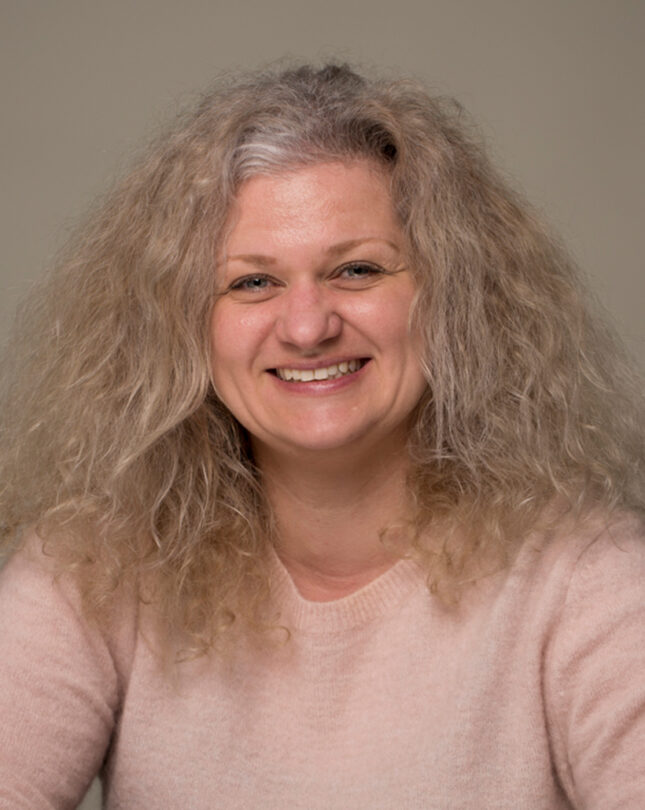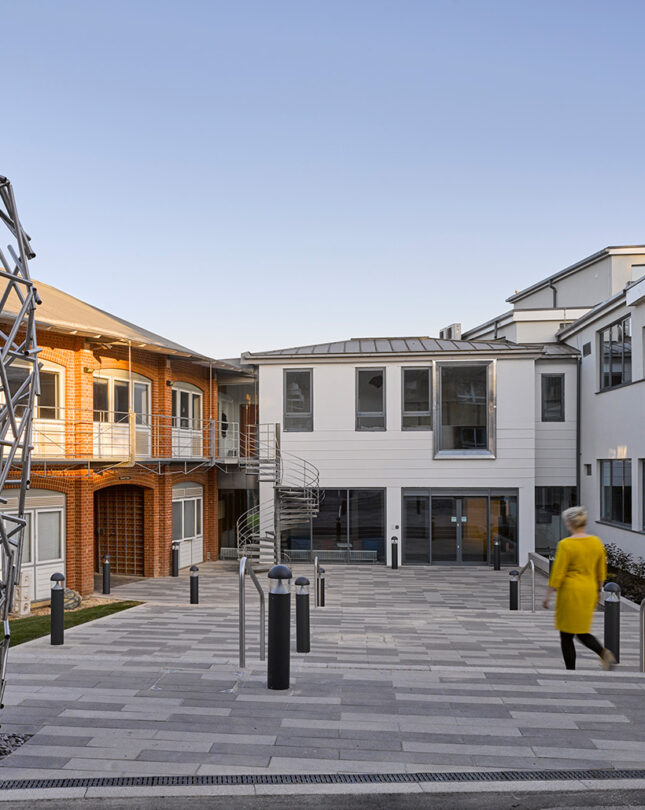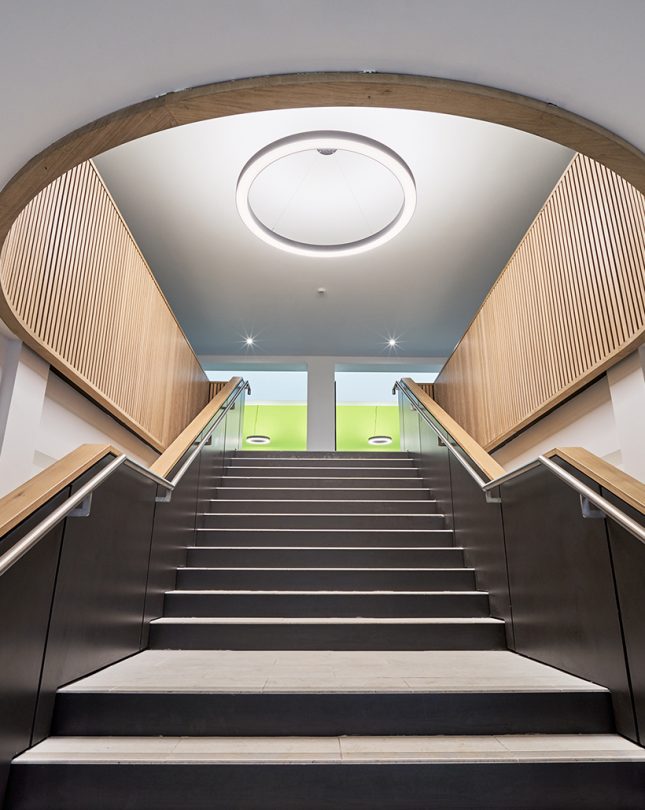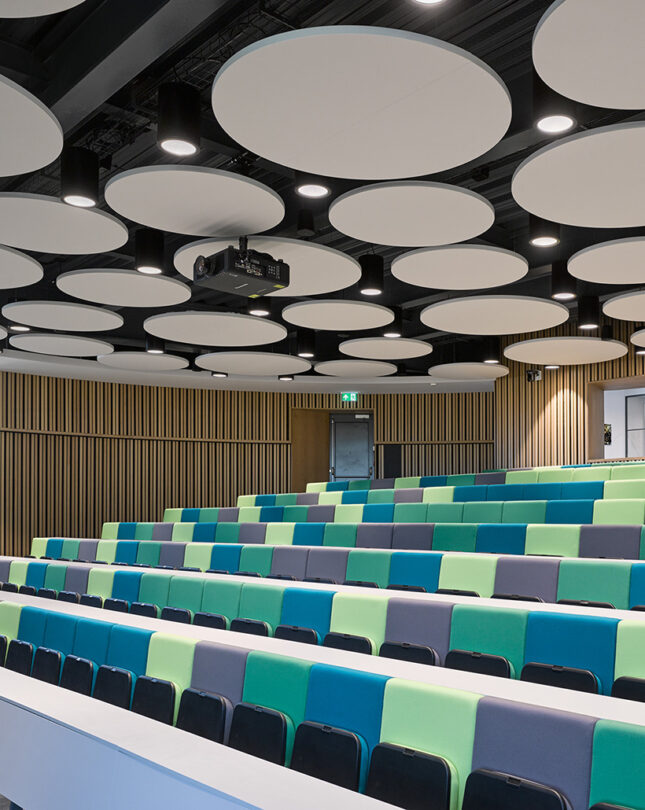Our latest news and views English
Underpinned by our Scandinavian design heritage, we bring you regular stories about architecture and interiors, exploring natural materials, acoustics, and the creation of safe and harmonious environments.
Fiona Godlement, from UK-based architecture practice Gray Baynes + Shew, talks about how they worked to establish a new look and feel to the science department of Radley College in Oxfordshire, using a harmonious palette of materials including fritted glass, zinc and oak veneer.
Radley College celebrated its 175th birthday in 2022. The boys boarding school in Oxfordshire is continuing to stay ahead of modern day educational needs and to this end has invested in modernising a number of facilities, among them its science block, over the last few years.

“The building is originally 1930s but the space also has a 1980s extension,” explains architectural and interior designer, Fiona Godlement who is a director with Gray Baynes + Shew. This Oxford-based architects practice, which has experience across a number of sectors, among them education and healthcare, has worked on other elements of Radley College such as the Countryside Centre completed in 2018 and the reconfiguration of the Old Wardens House into the Social (boarding house) completed in 2020.
Work on the Science Block where both physics and chemistry are taught finished in 2019 with a construction cost of £5 million. The intention for its refurbishment was to establish an aesthetic language that unites the existing structure, the later extension and newer elements such as the lecture theatre and atrium.
Photo: Andrew Ogilvy
The existing building with its exposed concrete frame and infill panels was designed by W.G. Newton and constructed in 1937. The original structure had large expanses of Crittall windows but the window pattern had been changed over time as the building underwent several extensions. “We wanted to get some light in the middle and change the circulation routes,” continues Godlement. Low-pitch industrial metal roofs superseded the original flat roofs.
Photo: Lance McNulty


Gray Baynes + Shew’s response took into account both the original features and these later additions, refreshing spaces where required and reconfiguring others to work alongside new extensions which increased the number of laboratories for both physics and chemistry. “There is a large, wide main staircase right in the middle which is clad in Gustafs. We changed the orientation so it now runs the other way,” Godlement says. This switch was important in making wayfinding more legible and direct. Getting around the science block was previously confusing and protracted, which reduced the identity of the department.
“There is a single staircase in what was the 1980s extension, which goes up to the top floor, uniting the physics and chemistry departments,” she adds. Here there’s a new top-lit central atrium space bringing much needed illumination into the project. Addressing sound as well as light was important here. The acoustic properties of Gustafs help to assuage the noise from the hustle and bustle of dozens of teenagers climbing up and downstairs to reach their lessons.
Products specified in this scheme are Gustafs Linear Rib, 22 mm and SM8 perforated acoustic panels, both in oak veneer.
Photo: Lance McNulty
Getting the acoustics right was also a key part of the new lecture theatre which also includes Gustafs products. This new structural addition has a dramatic circular form which is part glazed and part rendered. Its silhouette is emphasised by a series of aluminium vertical fins in front of the fritted glazing.
Explaining the rationale overall, Godlement adds finally, “I just wanted to contextualise the space with what works for the school, adding an acoustic buffer where necessary.”
Photo: Lance McNulty
